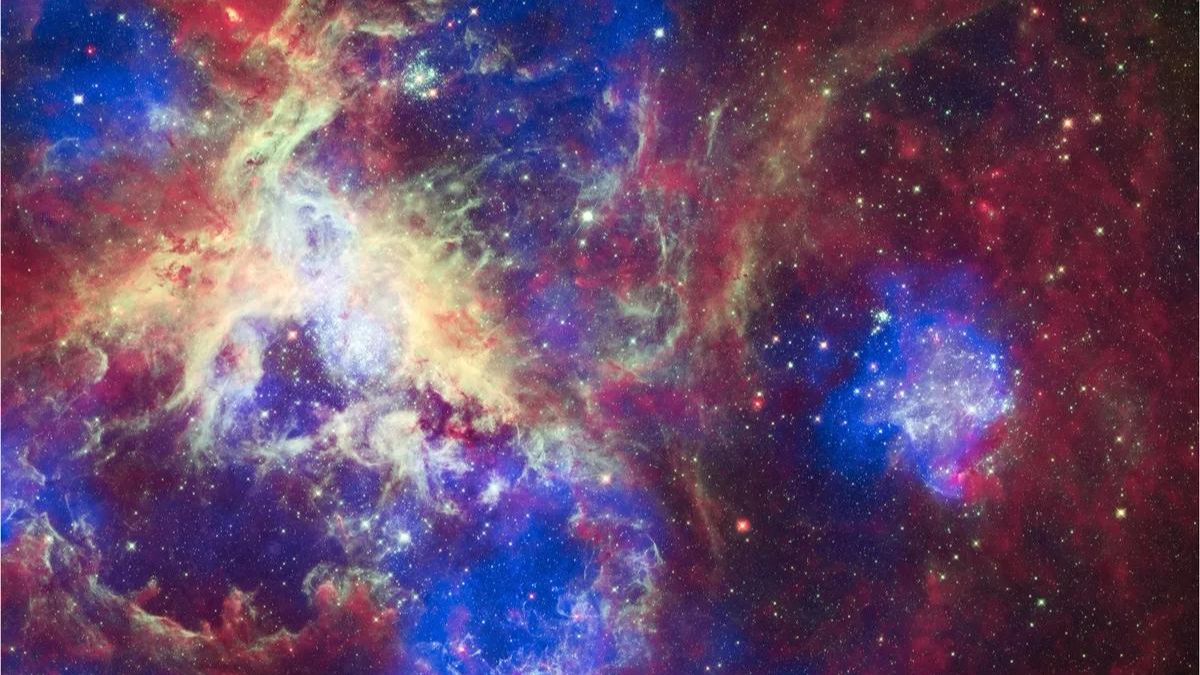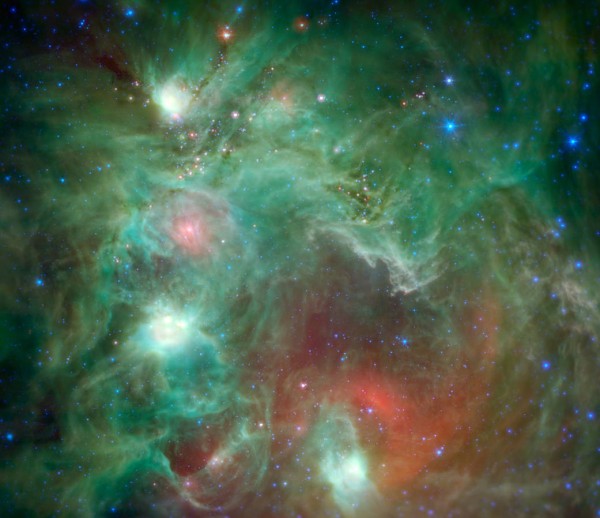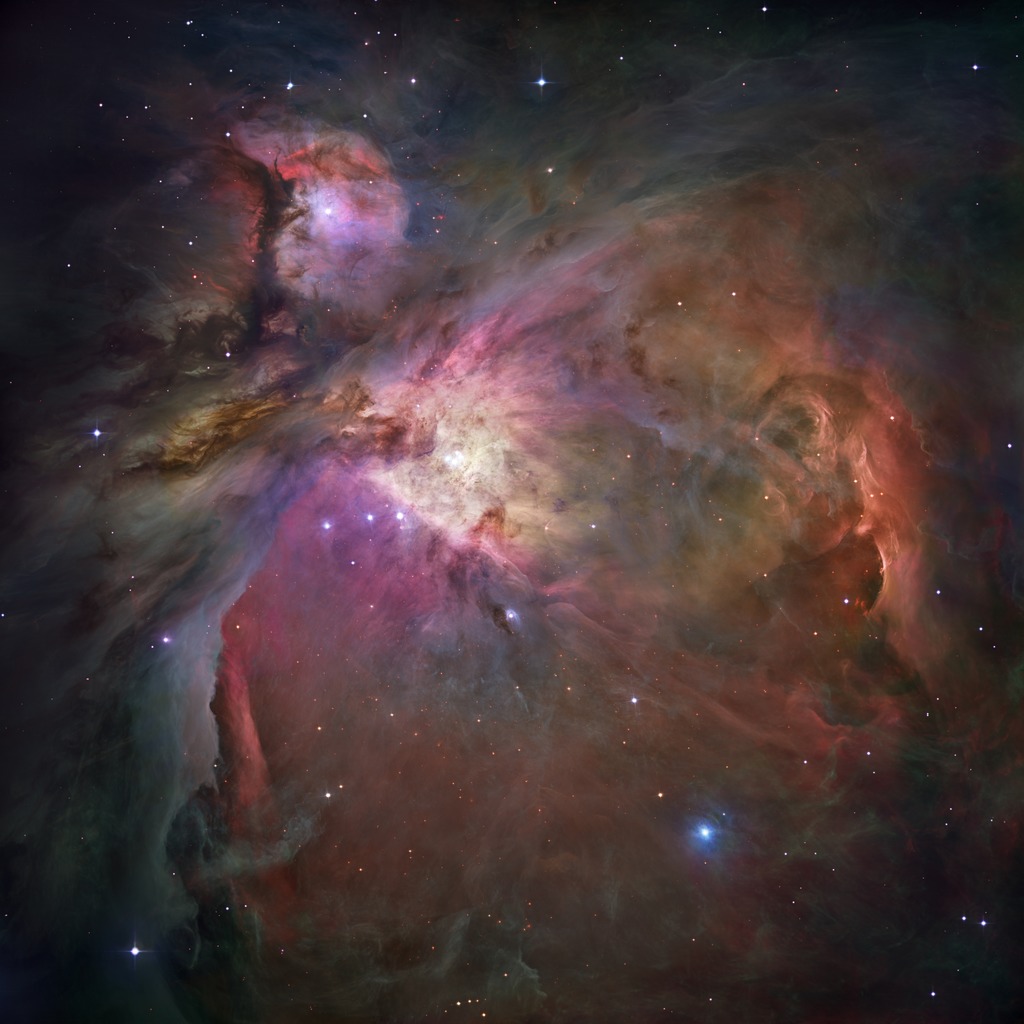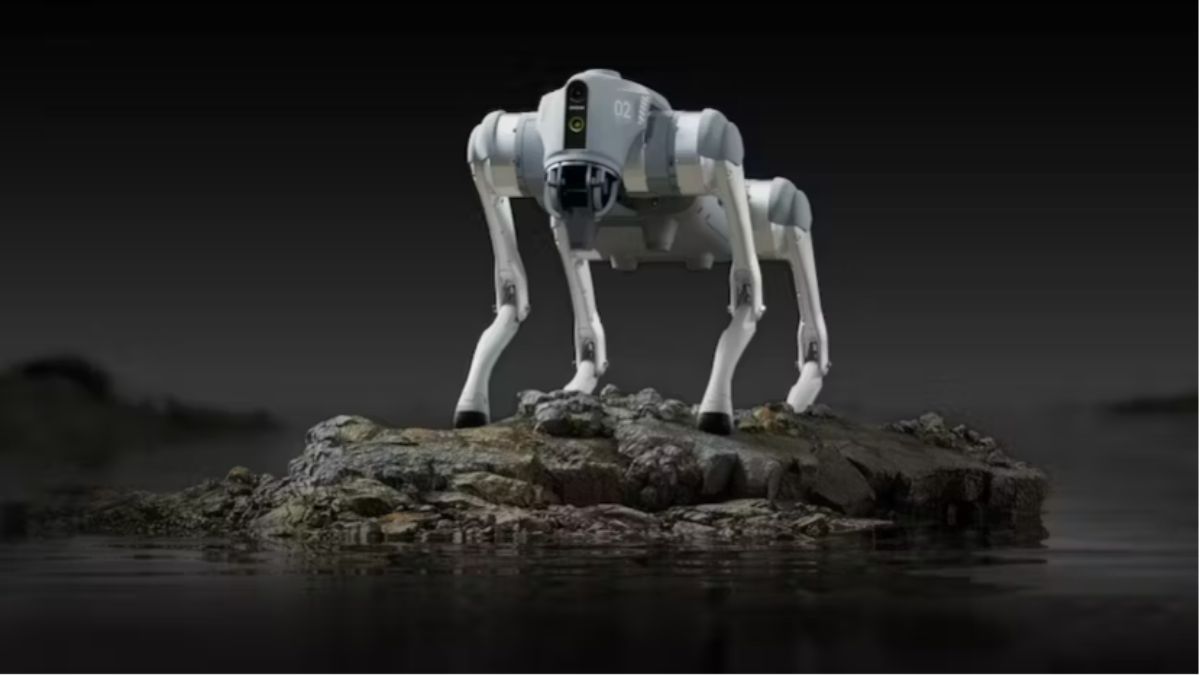In the "Monkey Head" Nebula, NASA's Spitzer Space Telescope Captures Baby Stars
May 23, 2023 By Monica Green

(Image Credit Google)
(Image credit- CNET)
Get ready for an otherworldly journey as NASA's decommissioned Spitzer Space Telescope continues to reveal an incredible cosmic display - a nursery of newborn stars hidden within the star-forming area known as NGC 2174.
The "Monkey Head" nebula, which has the amusing name "Monkey Head," was created by the hidden brilliance of countless newborn stars that are seen emerging from the cosmic dust in this mesmerizing infrared photograph.
The monkey's face, however, vanishes as we enter the infrared spectrum, revealing a tapestry of varied clouds that glitter with heavenly delight.
A celestial spectacle can be seen in Celestial Spectacle NGC 2174, which can be found 6,400 light-years away in the remote regions of the constellation of Orion. Observed in the image's center are columns of dust sculpted by stellar winds and radiation from the region's young, active stars.
[caption id="" align="aligncenter" width="600"]

Image credit- Tech Times[/caption]
According to NASA, Spitzer's infrared vision allows us to see a fascinating preview of impending star clusters as well as a glimpse into the universe's future. Investigating the image reveals darker filaments with reddish pockets of light, a sign of young stars being cradled in warm dust.
This soft light, which is illuminated at infrared wavelengths, illustrates the process of cosmic formation. These budding stars will eventually break free of their dusty confines, their light shattering the misty veils all around.
The world was first introduced to this
breathtaking image in 2015, and it comes to life by giving the infrared spectrum visible colors. On Monday, May 22, NASA featured it as the featured image of the day.
3.5-micron wavelengths are represented in mesmerizing blue tones, while 8.0-micron wavelengths provide a mysterious green glow. The captivating red hues represent the heat radiation given off by the hottest parts of the dust.
The delicate touch of starlight illuminates the biological molecules in the dust clouds as our eyes move across this cosmic canvas, revealing the exquisite pattern of the Monkey Head nebula.
[caption id="" align="aligncenter" width="1024"]

Image credit- NASA[/caption]
Areas outside of Spitzer's field of view have been filled in to complete this cosmic work of art using infrared data from NASA's Wide Field Infrared Survey Explorer, or WISE.
Animal Head Nebula
With two missions working together, we can better comprehend and appreciate the Monkey Head nebula and ensure that no area of this celestial playground is untouched.
Astronomers can learn a lot about the history of stellar clusters and the star creation process from the Monkey Head Nebula. By examining this area, scientists can learn more about the dynamics and processes at work during star formation.
Also read:
NASA believe Webb’s deep field image may have captured the earliest stars
The fascinating astronomical phenomenon known as a nebula illustrates the complex interactions between nascent stars, dust clouds, and the forces that are responsible for the formation of our universe. Astronomers and space lovers alike are very interested in and interested in studying this object due to its remarkable appearance and scientific worth.


 Image credit- Tech Times[/caption]
According to NASA, Spitzer's infrared vision allows us to see a fascinating preview of impending star clusters as well as a glimpse into the universe's future. Investigating the image reveals darker filaments with reddish pockets of light, a sign of young stars being cradled in warm dust.
This soft light, which is illuminated at infrared wavelengths, illustrates the process of cosmic formation. These budding stars will eventually break free of their dusty confines, their light shattering the misty veils all around.
The world was first introduced to this breathtaking image in 2015, and it comes to life by giving the infrared spectrum visible colors. On Monday, May 22, NASA featured it as the featured image of the day.
3.5-micron wavelengths are represented in mesmerizing blue tones, while 8.0-micron wavelengths provide a mysterious green glow. The captivating red hues represent the heat radiation given off by the hottest parts of the dust.
The delicate touch of starlight illuminates the biological molecules in the dust clouds as our eyes move across this cosmic canvas, revealing the exquisite pattern of the Monkey Head nebula.
[caption id="" align="aligncenter" width="1024"]
Image credit- Tech Times[/caption]
According to NASA, Spitzer's infrared vision allows us to see a fascinating preview of impending star clusters as well as a glimpse into the universe's future. Investigating the image reveals darker filaments with reddish pockets of light, a sign of young stars being cradled in warm dust.
This soft light, which is illuminated at infrared wavelengths, illustrates the process of cosmic formation. These budding stars will eventually break free of their dusty confines, their light shattering the misty veils all around.
The world was first introduced to this breathtaking image in 2015, and it comes to life by giving the infrared spectrum visible colors. On Monday, May 22, NASA featured it as the featured image of the day.
3.5-micron wavelengths are represented in mesmerizing blue tones, while 8.0-micron wavelengths provide a mysterious green glow. The captivating red hues represent the heat radiation given off by the hottest parts of the dust.
The delicate touch of starlight illuminates the biological molecules in the dust clouds as our eyes move across this cosmic canvas, revealing the exquisite pattern of the Monkey Head nebula.
[caption id="" align="aligncenter" width="1024"] Image credit- NASA[/caption]
Areas outside of Spitzer's field of view have been filled in to complete this cosmic work of art using infrared data from NASA's Wide Field Infrared Survey Explorer, or WISE.
Image credit- NASA[/caption]
Areas outside of Spitzer's field of view have been filled in to complete this cosmic work of art using infrared data from NASA's Wide Field Infrared Survey Explorer, or WISE.






